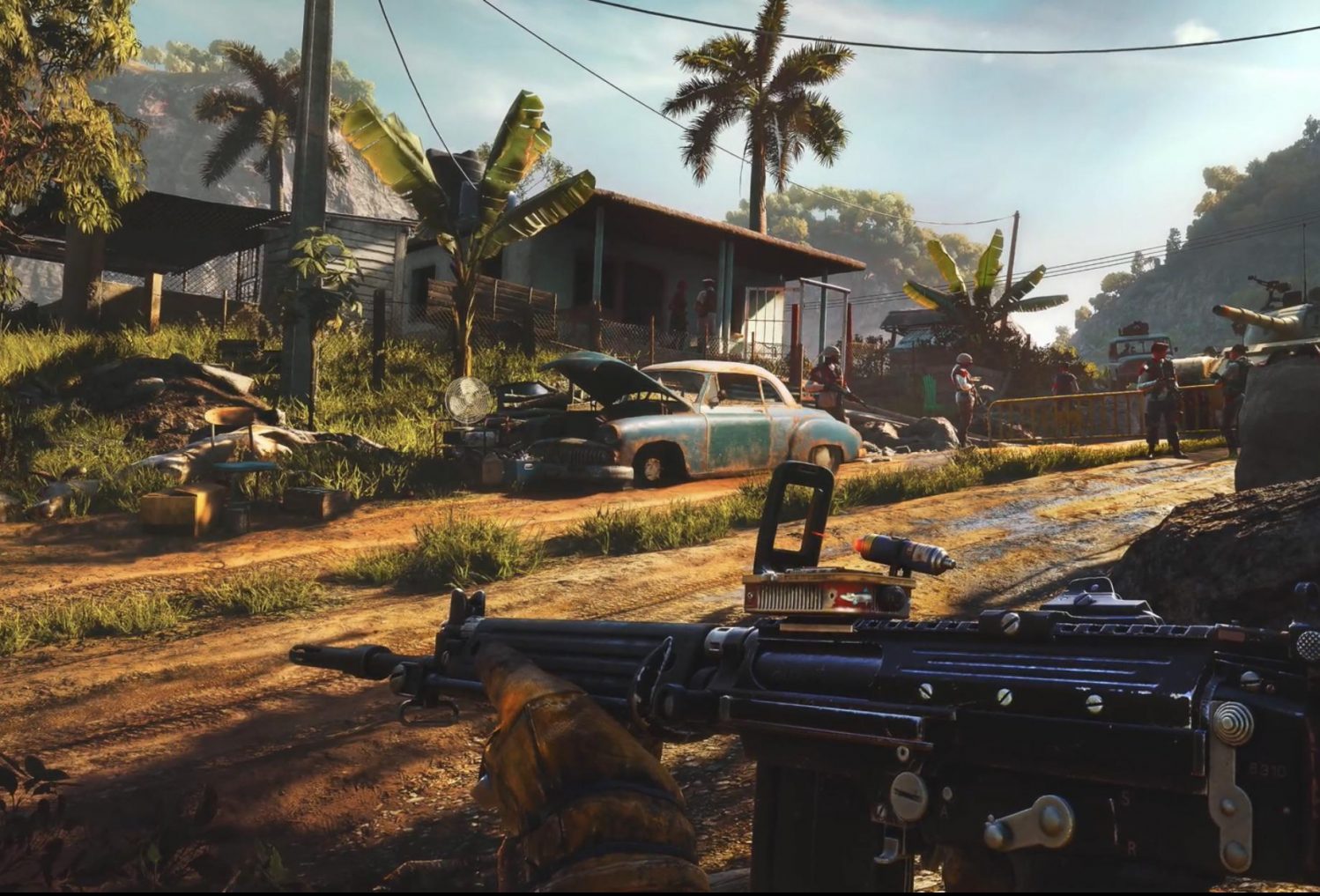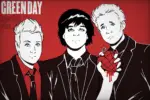Political controversy is nothing new to the Far Cry franchise. From its first installment back in 2004 to the recent announcement of Far Cry 6, the series has built an identity out of fictional settings that often run parallel to the struggles of real-life countries. These allusions have become more overt in recent installments, sparking public debate over whether Far Cry is a franchise deeply rooted in politics or something simply using these scenarios for purposes that are more cosmetic than thematic. Far Cry 6 has already been subject to this scrutiny even before its release, echoing questions that have been asked of its predecessors.
The Far Cry series, with its diverse locations, larger-than-life villains and emphasis on gray morality, has always tread a delicate line between the apolitical and the controversial. By examining how each main Far Cry title has incorporated historical and political elements into its narrative, it becomes clear how the franchise has evolved to focus on these features more explicitly today.
Far Cry (2004)
In retrospect, the first Far Cry game could be considered the black sheep of the franchise: Later installments were developed by a different studio and contained hardly any of the sci-fi elements featured in the original. Regardless, it still laid out plenty of the groundwork that defines the series today.
In a sequence of events that liken themselves to a James Bond plot line, players assume the role of ex-military operative Jack Carver, who finds himself marooned in a South Pacific archipelago. Fighting off mercenaries and eventually mutant monsters, Carver discovers that the archipelago — and its now-desolate World War II-era bunkers — is the home of a megalomaniacal scientist who seeks to populate the world with superhumans.
While Far Cry establishes distinct themes surrounding eugenics and “playing God,” the inclusion of mad scientist Dr. Krieger and his mutant army serves more to raise the narrative stakes and diversify gameplay than to encourage a deeper examination of these themes; this was likely the intention from the start. The Imperial Japanese bunker ruins, for instance, are a set piece first and foremost for the game — their ties to history do not contribute to any message that the game is trying to convey. Instead, the occasional real-life references help to cement a feeling of realism and immersion that has been lauded by critics and has since become a core aspect of Far Cry.
Far Cry 2 (2008)
The four years after Far Cry significantly influenced the development of its sequel. Ubisoft Montreal had taken the creative reins and constructed a whole new game engine specifically for Far Cry 2. Immersion and realism were at the forefront of the installment, with complex systems like dynamic day-and-night cycles and AI enemies who could react to one another independently. Even by today’s standards, the level of detail in Far Cry 2 is impressive.
Ubisoft Montreal’s dedication to realism is also matched by the game’s storyline, which is significantly more sobering than the first. Whereas Far Cry saw players essentially becoming action heroes, Far Cry 2 sets its character loose in an unnamed African territory as a hired gun. Initially being sent to kill a powerful arms dealer named “the Jackal,” players are instead swept into a struggle between two warring factions that both implore the protagonist to dismantle the other.
“A living being seeks above all else to discharge its strength — life itself is will to power.” The Jackal’s quoting of “Beyond Good and Evil” establishes the moral turmoil of Far Cry 2 in a way that contrasts with the relatively insignificant allusions of Far Cry. It presents a world of ambiguity in which allegiances are hardly of any worth, masked by a blanket of indiscriminate violence. Factions are largely indiscernible from one another.
It also paints a vividly gritty depiction of desperation: The protagonist is stricken with malaria throughout the game, guns jam frequently and non-playable characters will offer payment for the execution of their comrades. The attitude of its story is built into the gameplay in a manner that turns one Far Cry critique on its head: “[The first game] would have been much more satisfying had I felt like all of my murdering had been in service of something.”
Far Cry 3 (2012)
Far Cry 2 may have brought more explicit commentary to the table, but the popularity of Far Cry 3 was what catalyzed widespread debate over the franchise and its politics. The game was massively successful, selling roughly 10 million units by the time Far Cry 4 was released.
However, Far Cry 3 was the first title to receive a substantial amount of backlash. While the first game was not focused on conveying any real political perspective and the second didn’t see much controversy for its nihilistic outlook on violence, some saw Far Cry 3 as perpetuating racial stereotypes, such as the “white savior” trope.
Most of these claims stem from the game’s premise: an American named Jason Brody is vacationing in the Pacific with friends when he is abducted by pirates, escapes, then eventually leads the native Rakyat tribe in retaking their land as he grows in power and skill. One Forbes article explained why this synopsis fits a problematic storytelling format: “We are not racists, it says, we fight with the natives … it ends up in the same place, painting the natives as … helpless without a white person to lead them.”
Lead writer Jeffrey Yohalem refuted this argument by stating that the protagonist doesn’t actually have much agency in Far Cry 3 — essentially, Jason Brody is still at the mercy of factions that dictate what he (and the player) are capable of doing at any given time, meaning that the power actually rests with the Rakyat tribe and others. “…Jason is basically used by everyone on the island — Jason is basically a gun, that is upgraded by the natives on the island.”
Yohalem went on to argue that Far Cry 3 was written with the intention of playing into and then subverting racial tropes like the “white savior” or “noble savage” in an ironic fashion, building up the importance of the player only to manipulate them into doing the bidding of others. Still, a Kotaku article found Yohalem’s execution of this twist to be muddled, inarticulate and ultimately lost to the more caricatured portraits he intended to subvert.
What’s particularly notable about the political controversy surrounding Far Cry 3 is the focus on its depiction of racial themes and tropes, which had largely been absent from the discussion of previous titles in the franchise. As Far Cry 3 and subsequent games increasingly incorporated specific cultures and ethnicities into their storylines, the more frequently these concerns arose.
Far Cry 4 (2014)
There are some strange comparisons one could make between Far Cry 4 and Far Cry 2. In many ways, the two are opposites of one another; in other ways, they align uncannily. For example, one point of similarity between both games is their choice of setting: war-torn, remote territories that have been divided by infighting. The fictional country of Kyrat in Far Cry 4 was inspired by Nepal and the Nepalese Civil War; some members of the development team even traveled to Nepal for research, just as the Far Cry 2 team had visited Kenya six years earlier.
The tone is what differentiates the second and fourth games’ respective use of setting. While Far Cry 2 takes itself seriously — using its African location as an extension of its themes — Far Cry 4 uses Kyrat primarily as a backdrop for the machinations and dark humor of Pagan Min, the title’s charismatic (and murderous) antagonist. Where Far Cry 2 purposely desensitizes the player to brutality in order to prove a point, Far Cry 4 expressly points out the gratuitous nature of its violence and laughs at its absurdity.
In Far Cry 4, players assume the role of Ajay Ghale, who is returning to his home in Kyrat (as opposed to visiting it for vacation a la Far Cry 3). For the first time in the Far Cry franchise, the protagonist was not an outsider to its setting. This was a deliberate choice by narrative director Mark Thompson, who asserted that “The Jason Brodys … the outsiders who come in and try and have their escapist white savior fantasy are actually the bad guys.”
Far Cry 5 (2018)
Many political references appeared in the franchise in the 14 years between Far Cry and its fifth mainline installment, but the games had yet to make any definitive commentary on real-life events. Enter Far Cry 5, set in the fictional county of Hope, Montana. The game follows a rookie cop tasked with taking down a cult leader by the name of Joseph Seed, who was no doubt inspired by the likes of David Koresh. Upon the release of its announcement trailer, Far Cry 5 was the subject of fierce speculation as to its political message. It isn’t difficult to see why.
“Something’s coming. You can feel it, can’t you? You can feel that we are creeping towards the edge,” begins the trailer, littered with rural landscapes, American flags and religious imagery. Having witnessed mounting ideological polarization in the United States in recent years, many reviewers were quick to assume that the game would feature U.S. politics front and center. “…Ubisoft has picked a heated time to double down on something we rarely see in the gaming world: Americans fighting Americans over the concept of what ‘America’ is,” stated one reviewer.
Yet, when the game was released, many expressed their disappointment at how Far Cry 5 addressed very little when it came to American politics. As it turned out, Joseph Seed was simply a self-indulgent cult leader like all the others, having more to say about his delusional visions than anything substantial about political polarization, racial issues, financial inequality, etc.
Looking Ahead
What becomes clear when reflecting upon the Far Cry franchise is that while it has remained largely apolitical, its publisher, Ubisoft, must be fully aware of the thin line it treads with each new installment. Instead of backing away from this, the franchise has used this “inoffensive controversy” to its advantage: Hit all the keywords, allude to current events, but never explicitly comment on anything that may alienate potential consumers.
While this approach has arguably diluted the message behind each Far Cry title, it generates a considerable amount of buzz. One shouldn’t be too surprised if the mentions of “revolution” and “radically different views” in Far Cry 6 are only explored in a way that remains distant from current-day politics. Then again, speculation before release has a bad track record when it comes to Far Cry games — perhaps all we can do is cross our fingers and see where Ubisoft takes us next.

















